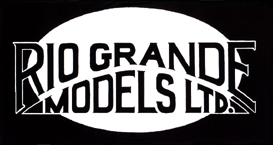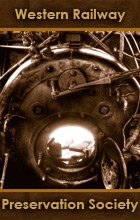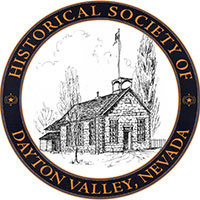

Lake Tahoe Narrow Gauge Railroad.
Carson & Tahoe Lumber & Fluming Company.By Randy Hees
T he Carson & Tahoe Lumber & Fluming Company (C&TL&F) was a child of the Comstock boom, frequently called the “Big Bonanza” centered around Virginia City Nevada. The mines needed timbers and props, the new city of Virginia needed lumber for construction, the railroad serving the Comstock, the Virginia & Truckee Railroad needed ties, the mills needed cordwood to fire their boilers in massive quantities, and fire wood was needed for homes and stoves. The nearest significant source of lumber was the Sierra Nevada, and particularly the Lake Tahoe basin. Lake Tahoe is only 32 miles from Virginia City, but the trip from lake shore, at 6,224’ calls for a climb of 900’ to Spooner Summit, then a descent to Carson City at 4,700’ before climbing up to Virginia City at 6,220.
Early logging was limited to small mills. Loggers tried teaming the lumber in large wagons, or river drives down the Carson river. Teaming was expensive and slow, the river drives failed miserably. The solution would be a narrow gauge railroad from the lake shore at Glenbrook to Spooner Summit, then a “V” flume to a yard south of Carson City, where lumber was loaded onto cars of the Virginia & Truckee for the trip up to Virginia City.
This new operation was controlled by Duane L Bliss, a business man and banker who had come to the Comstock in 1860 and purchased 160 acres of timberland near Spooner Summit in August 1870. But Bliss was not alone. For much of its early history, the Comstock was controlled by consortium associated with the Bank of California and Darius Ogden Mills. By late 1870, Bliss was partners with Henry Yerington, superintendent of the V&T (it is believed that this was with Mills and the bank crowd support). Together with their new organization; Yerington, Bliss and Company, purchased additional lumber land, several mills, and the Summit Flume Company.
By November 26, 1873, when they incorporated the Carson & Tahoe, Lumber & Fluming Company they had already built new saw mills and extended the flume system down Clear Creek to a flume yard and a connection with the V&T south of Carson City. They immediately made plans for a new 8.75 mile long railroad to efficiently move logs and lumber from the mill to the V-flume.
V&T surveyor and engineer I.E. James made a preliminary survey in early 1874. Grading began in the fall, In December two locomotives were ordered from Baldwin. The first 20 flatcars were built in Carson City, the next twenty flatcars were ordered from Detroit Car Works. Track laying began in the spring of 1875. Operations commenced in August 1875. The line required two switchbacks, eleven trestles and a 475’ tunnel. The average grade was 2.44% with short sections as steep as 4%.
The line was an immediate success. 10 additional flat cars were ordered from Detroit in 1876. In 1877 a third locomotive and 25 more Detroit flat cars were added. In 1886 the G. W. Chubbuck Lumber operation at South Lake Tahoe was purchased, and the Lake Valley Railroad was organized and built, purchasing a Porter 0-6-0 from the Santa Cruz and Felton Railroad. Logs harvested on the south shore were chained up into barges and floated to the mill at Glenbrook. In addition to their own logs, the mill also received them from G. W. Chubbuck who had moved on to harvest timber elsewhere around the lake, among others.
By the early 1890’s, as mining in Virginia City wound down, and as the available timber in their holding began diminish. The Sierra Nevada Wood & Lumber Co. to the north was winding down operations and sold their interest in Marlette Lake to the C&TL&F so it could continue supplying water to the flumes at Spooner in 1894. By the mid-1890s Duane L. Bliss made the decision to preserve what was left of the forest on his holdings and ended logging operations at Glenbrook. He would migrate from the lumber business to the tourist business, and so, in 1898, logging came to an end, and the railroad was dismantled, the rolling stock and, track material would be barged across the lake to be in the construction of the Lake Tahoe Railway & Transportation Co.
Myrick, David F. (1962). Railroads Of Nevada and Eastern California: Volume 1. Berkeley: Howell-North Books. ISBN 978-0-87417-193-8. (Recently reprinted by University of Nevada)
Farrell, Mallory Hope (2012). Rails Around Lake Tahoe. Berkeley: Signature Press.
Wilson, Dick. (1992)Sawdust Trails In The Truckee Basin: A History Of Lumbering Operations. Nevada City: Nevada County Historical Society.
Reference Material Available Online:
Documents.
Marlette Lake / Virginia City Gold Hill Water Company Water System.
National Register of Historic Places Nomination. United States Department of the Interior.
Paint Reference.
Lake Tahoe Narrow Gauge RR flatcar #25 by Andrew Brandon.
Built by the Detroit Car Works in 1875. Color used for "Yellow Ochre" is that found on equipment owned by the Virginia & Truckee Railroad.
Photographs.
Collected Carson & Tahoe, Lumber & Fluming Company Photographs.
Images collected from private collections, libraries and historical societies.
Published References.
List of references for the Carson & Tahoe, Lumber & Fluming Company. Compiled by Randy Hees.
Videos.
Glenbrook Returns To Steam At The Nevada State Railroad Museum, 5/23/15.
Filmed by Hunter Lohse.
C&TL&FCo. No. 1 "Glenbrook" - Nevada State Railroad Museum Public Debut.
Filmed by Mike Ninneman.
Glenbrook Unveiling Nevada State Railroad Museum Day 1.
Filmed by Ryan Blake.
Glenbrook Unveiling NSRM Day 2 - V&T INYO & 25.
Filmed by Ryan Blake.
Collections.
Carson & Tahoe, Lumber & Fluming Company; Henry M. Yerington Papers
University of California, Berkeley Bancroft Library



